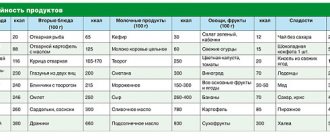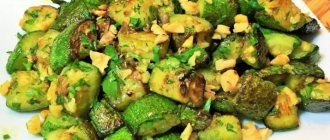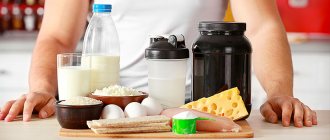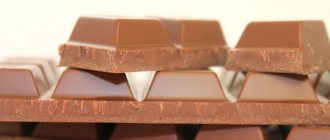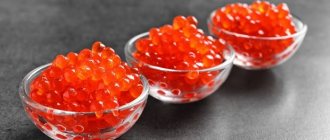Sauerkraut or sour cabbage is a dish of Russian national cuisine, which is prepared from white cabbage. Much earlier than the Slavs, the inhabitants of China fermented it in the third century, then the Koreans began to prepare very spicy sauerkraut kimchi. It is much healthier than fresh: the fermentation process enriches it with new vitamins and elements necessary for the normal functioning of the human body. It is worth knowing that proper sauerkraut must undergo natural fermentation: if you add vinegar to it, then this dish will lose most of its properties, although it will be ready much faster.
Composition and calorie content of sauerkraut
Sauerkraut contains several dozen vitamins and microelements, as well as a large amount of proteins necessary to meet the body’s daily needs.
The calorie content of sauerkraut is 19 kcal per 100 grams of product, of which:
- Proteins - 0.91 g;
- Fats - 0.14 g;
- Carbohydrates - 4.28 g;
- Dietary fiber - 2.9 g;
- Water - 92.52 g;
- Ash - 2.15 g.
Vitamins per 100 g:
- Vitamin A, RE - 1 mcg;
- Alpha Carotene - 5 mcg;
- Beta Carotene - 0.008 mg;
- Lutein + Zeaxanthin - 295 mcg;
- Vitamin B1 - 0.021 mg;
- Vitamin B2 - 0.022 mg;
- Vitamin B4 - 10.4 mg;
- Vitamin B5 - 0.093 mg;
- Vitamin B6 - 0.13 mg;
- Vitamin B9 - 24 mcg;
- Vitamin C - 14.7 mg;
- Vitamin E, TE – 0.14 mg;
- Vitamin K - 13 mcg;
- Vitamin RR, NE - 0.143 mg;
- Betaine - 0.5 mg.
Macroelements per 100 g:
- Potassium, K - 170 mg;
- Calcium, Ca - 30 mg;
- Magnesium, Mg - 13 mg;
- Sodium, Na - 661 mg;
- Phosphorus, Ph - 20 mg.
Microelements per 100 g:
- Iron, Fe - 1.47 mg;
- Manganese, Mn - 0.151 mg;
- Copper, Cu - 96 μg;
- Selenium, Se - 0.6 μg;
- Fluorine, F - 7 μg;
- Zinc, Zn - 0.19 mg.
Digestible carbohydrates per 100 g:
- Mono- and disaccharides (sugars) - 1.78 g;
- Glucose (dextrose) - 0.14 g;
- Fructose - 0.04 g.
Essential amino acids per 100 g:
- Arginine - 0.053 g;
- Valine - 0.03 g;
- Histidine - 0.016 g;
- Isoleucine - 0.021 g;
- Leucine - 0.029 g;
- Lysine - 0.031 g;
- Methionine - 0.009 g;
- Threonine - 0.025 g;
- Tryptophan - 0.008 g;
- Phenylalanine - 0.023 g.
Essential amino acids per 100 g:
- Alanine - 0.03 g;
- Aspartic acid - 0.087 g;
- Glycine - 0.021 g;
- Glutamic acid - 0.209 g;
- Proline - 0.034 g;
- Serine - 0.037 g;
- Tyrosine - 0.014 g;
- Cysteine - 0.008 g.
Fatty, saturated fatty, monounsaturated and polyunsaturated acids per 100 g:
- Caprylic – 0.001 g;
- Capric acid - 0.001 g;
- Lauric acid - 0.001 g;
- Palmitic – 0.028 g;
- Stearic acid - 0.003 g;
- Oleic (omega-9) - 0.013 g;
- Linoleic acid - 0.034 g;
- Linolenic – 0.033 g.
Cabbage is fermented during a fermentation process involving lactic acid bacteria, which give it a sour taste and fight pathogenic bacteria.
Sauerkraut contains high-quality proteins, thanks to essential amino acids. They improve the growth and development of organs and restore damaged cells.
In 100 grams of sauerkraut, 14.5% is dietary fiber. They are not digested and do not contain any useful elements, but they remove harmful toxins, carcinogens, bile acids and other harmful metabolites that enter the body with food. Nutritionists recommend consuming this product during a diet: it is low-calorie and nutritious.
The high sodium content (50% per 100 grams of product) is due to the high salt content. Sodium flushes potassium from the body, forming a separate compound with it. Despite the fact that sauerkraut also contains potassium, you need to increase its consumption for a while, for example, a diet with sauerkraut.
Salad “Refreshing” with sour cream and horseradish
Products
- Cabbage (white or red) - 100 grams
- Carrots - 100 grams
- Beets (optional) - 100 grams
- Apple – 100 grams
- Horseradish (fresh root) – 10 grams
- Sour cream – 50 ml
- Salt - 1/4 tsp.
- Greens for decoration (optional)
Preparation:
- Grind the apple using a grater.
- Add grated carrots.
- Add grated raw beets. (If necessary, this ingredient can be excluded from the salad components.)
- Shred the cabbage and add to the rest of the vegetables. (White cabbage can be replaced with red cabbage; it will make the salad even brighter and more original).
- Grind the horseradish root.
- Add it to the sour cream and mix, add salt.
- Season the salad with cabbage and other vegetables with sour cream and horseradish.
- Mix the vegetable salad.
- Decorate a refreshing salad with sour cream and horseradish with herbs and serve. Bon appetit!
Useful properties of sauerkraut
Even in Rus', sauerkraut was considered a healthy product; it was eaten both as an independent dish and added to various dishes.
Nowadays, its benefits have been scientifically proven, and we will tell you about all aspects of this effect. The benefits of sauerkraut and dishes containing it:
- Strengthening the immune system
. Sauerkraut has a high content of ascorbic acid, but the main benefit is that it does not have to be heat-treated, so you can preserve it in full. The antioxidants contained in this dish also have a similar effect. - Helps with diabetes
. Sauerkraut contains a lot of fiber, which has a beneficial effect on the functioning of the pancreas and, accordingly, blood sugar levels. - Improves appetite
. Substances contained in cabbage cause the gastric glands to work more actively, secreting more juice. - Relieves toxicosis
. Sauerkraut juice helps with nausea during pregnancy. - Reduces weight
. Vitamin PP regulates and normalizes metabolism, violations of which lead to excess weight and obesity, and tartronic acid prevents the formation of fatty deposits. - Helps with vitamin deficiency
. Sauerkraut is recommended for people suffering from vitamin deficiency, as it contains a high content of useful substances that can be introduced into the body naturally, without pills and droppers. - Relieves allergy attacks
. Scientists have proven that sauerkraut contains natural antihistamines that help with allergies and bronchial asthma. - Rejuvenates the skin
. Eating this dish accelerates cell regeneration, enriches them, and cleanses the body as a whole. - Strengthens the nervous system
. In this process, the roles of two components can be distinguished: B vitamins and sodium + potassium. The first increases resistance to stress and fights depression, and the second is involved in the generation of nerve impulses, which improves short-term memory. - Eases hangover
. After alcohol intoxication, it is recommended to consume sauerkraut brine: it will partially relieve headaches and nausea. - Strengthens the heart and blood vessels
. Sour cabbage lowers cholesterol levels and helps with atherosclerosis of blood vessels, which improves the cardiovascular system. - Improves the functioning of the gastrointestinal tract
. Sour cabbage juice helps prevent peptic ulcers, normalizes stomach acidity, and improves digestion. - Helps with prostate diseases
. Sauerkraut helps maintain normal men's health. - Cancer prevention
. The rich composition of sauerkraut prevents the division of cancer cells. It acts on both benign and malignant tumors.
Note! If you have problems with heavy digestion of meat, you can try eating it with sauerkraut: it contains vitamin B6, which helps break down proteins.
Cabbage for weight loss
Cabbage for weight loss is an indispensable product that allows you to eat varied and satisfying during your diet. How does cabbage help you lose weight? Cabbage, whose calorie content is quite low, contains coarse dietary fiber that helps remove waste, toxins, and cholesterol from the body. Cabbage for weight loss is effective due to the following properties:
- Rich enzyme composition. In addition to containing fiber, cabbage contains tartronic acid, which helps slow down (inhibiting property) the body's processing of carbohydrates and their transformation into fats. Tartronic acid is destroyed during heat treatment of the product;
- Low calorie content (the highest calorie content is cabbage stewed with meat - 160 calories).
Sauerkraut, whose calorie content allows it to be included in any dietary menu, allows you not only to effectively reduce weight, but also to replenish the balance of vitamins, micro- and macroelements. Cabbage provides long-lasting satiety, allowing you to eliminate unnecessary snacks from your diet, as well as avoid the physiological and psychological stress that inevitably arises when following many restrictive diets.
When following a diet, fresh cabbage, the calorie content of salads from which does not exceed 50 calories per 100 g, which is explained by the addition of vegetable fats, is recommended to be consumed in limited quantities in order to avoid intestinal bloating and discomfort in the gastrointestinal tract. To effectively lose weight, cabbage is recommended to be stewed, baked in the oven or boiled. For weight loss, it is recommended to cook cabbage in its pure form, without adding meat, which significantly reduces the calorie content of the dish. To prepare cabbage, the calorie content of which will be kept at a fairly low level, it is recommended to use vegetable fats (sunflower, olive oil).
Harm of sauerkraut and contraindications for use
There are very few contraindications to consuming sauerkraut: if the product is prepared correctly, then it is almost impossible to find harmful and, even more so, hazardous substances in it.
Sauerkraut should be consumed with caution in the following cases:
- Heart diseases
. Sodium, contained in large quantities in sauerkraut, is contraindicated for heart problems. However, there is a way to reduce it if you have an irresistible urge to “crunch”: you need to wash the cabbage and pour in vegetable oil. With this recipe, you can afford a small amount of this dish. - Increased stomach acidity
. Sauerkraut stimulates the secretion of more gastric juice, which, with increased acidity, will lead to heartburn. - Intestinal obstruction
. With this problem, sauerkraut will lead to gas formation and bloating.
Absolute contraindications to consuming sauerkraut:
- Lactation
. This product contains salt, acid, and sometimes hot spices. Nursing mothers should give it up before finishing breastfeeding, otherwise it will affect the baby’s digestion. - Diseases of the stomach and intestines in the acute stage
. As we said above, sauerkraut is a rather “aggressive” product, which can cause a deterioration in gastrointestinal diseases.
Important! Sauerkraut cannot be cooked in zinc or tinned containers: these metals, when oxidized (fermented), release tin and zinc compounds into the product, which are hazardous to health. You should also refuse wooden containers, the quality of which you are not sure of: new wooden containers contain tannins and resinous substances in the wood, which, when released into the product, worsen its appearance and taste. The most optimal cookware is enamel or glass.
“Asian” salad with chicken and vegetables
Products
- Chicken breast – 250 g
- White cabbage – 100 g
- Sweet pepper - 100 g
- Carrots – 100 g
*
For refueling:
- Vegetable oil – 40 ml
- Soy sauce - 20 ml
- Vinegar (wine, rice) or lemon juice - 5 ml
- Sugar - 1 tsp.
- Salt - to taste
- Ground pepper - to taste
*
For the marinade:
- Vegetable oil - 1 tbsp. l.
- Ground paprika - 1 tsp.
- Ground coriander - 0.5 tsp.
- Salt to taste
- Ground black pepper - to taste
To prepare this salad, you can use ready-made grilled chicken, smoked or boiled.
How to prepare Asian salad with chicken and vegetables:
- Mix the ingredients for the marinade: vegetable oil, paprika, coriander, salt and pepper (you can use your favorite spices).
- Coat the chicken breast with the prepared mixture and place in the oven for 30 minutes at 200 degrees. Cool the baked breast completely.
- Chop the cabbage thinly, lightly salt and mash with your hands.
- Sweet pepper (you can take peppers of different colors) cut into strips.
- Grate the carrots on a Korean grater or cut into thin strips. Lightly mash the carrots with your hands to make them softer.
- Cut the cooled baked chicken breast into strips.
- Mix ingredients for dressing: vegetable oil, soy sauce, vinegar, sugar, salt, pepper.
- Mix the salad ingredients and season with the prepared sauce.
- Cool the salad with chicken breast and vegetables, decorate as desired and serve.
- Bon appetit!
How to cook sauerkraut
Below we will tell you how to deliciously prepare sauerkraut. However, before fermenting it, you need to know a few secrets that will help you choose the right starting product and avoid unpleasant moments in the process:
- Capacity
_ For pickling, as a rule, late varieties of cabbage are used: early varieties do not have the slight sweetness of later varieties, and after fermentation they lose their “crunchiness” due to the initial looseness of the structure. - Expenses
. In order to save money, it is recommended to use large heads of cabbage: the larger, the less waste during processing. - Purity
. It is imperative to observe sanitary standards when preparing this product: exceptionally clean dishes. To be sure, you can douse it with boiling water or alcohol, as is done on an industrial scale. Otherwise, the product may simply go bad. - Recipe
. If you don’t want to get a cabbage “rag” instead of a crispy and attractive dish, then you can’t reduce the amount of salt in the recipe. - Foreign microflora
. Have you followed all the cooking standards, but the cabbage has darkened? It is best to throw away the product: in addition to harmless reasons, this may be the first result of the product starting to rot due to the activity of foreign microflora.
Sauerkraut recipes:
- Sauerkraut with additives (apples, lingonberries, viburnum, cranberries)
. Peel white cabbage (5 kg) from the top leaves and chop into thin strips. Grate carrots (500 grams) on a coarse grater and mix with cabbage. Add 100-110 grams of salt to the resulting mass, mix thoroughly and knead with your hands or crush a little. Do not pour the juice obtained after pressing anywhere: add it to the pan after preparing all the ingredients. Prepare the additive (500 grams): peel the apples and cut into small pieces. If you use lingonberries, viburnum or cranberries, you need to wash them, dry them a little and make sure the berries are intact. You can add apples and berries at the same time in a ratio of two to three. Place a few clean cabbage leaves or currant leaves on the bottom of the pan. Then lay out the ingredients in layers: cabbage with carrots - additive - seasonings (allspice, bay leaf, black peppercorns or cumin). All seasonings can be added together or separately, to taste. Cover the filled dish with cabbage leaves and gauze. Place under pressure in a large container, you can use a basin (during fermentation, juice may spill out of the pan). Leave the cabbage in a dark place for 3 days. You can check the readiness of cabbage by two signs: lack of foam and taste. If it is not ready yet, then you can leave it under pressure for a few more days. The maximum preparation time is a week. After fermentation, transfer the cabbage to another bowl without draining the juice and put it in the refrigerator. - Instant sauerkraut
. Prepare the brine: boil 2 liters of water with salt (100 grams), sugar (70 grams), bay leaves (2-3 pieces) and black peppercorns (2-4 peas). Cool the brine. Chop white cabbage (3 kg) into strips, grate carrots (200-300 grams), mix with cabbage. Pour half the brine into a three-liter jar, compact the cabbage and carrots, add the remaining brine until completely covered. Close the jar with a nylon lid, place in a bowl and put in a warm place (no higher than 25 degrees). After two days, make several holes in the cabbage and cover the jar with gauze. After three days, you can try the cabbage: if it’s ready, cover it with a lid and put it in the refrigerator.
Quick recipe for dinner
From white cabbage you can make a salad with garlic and mayonnaise that men will like. Garlic gives the dish a spicy kick.
Composition of ingredients
To prepare the product you will need:
- cabbage - 350 g;
- tomatoes - 3 pcs.;
- cucumbers - 1 pc.;
- garlic - 2 cloves;
- mayonnaise – 2-3 tbsp. l.;
- greens - according to taste preferences;
- salt - as much as needed.
Step-by-step cooking process
To make the dish tasty, you must follow the instructions:
- The cabbage needs to be washed, cleaned of contaminated leaves, and chopped using a special knife or grater. To prepare the dish you will need a variety for pickling.
- Cucumbers must be cut into long bars.
- It is better to chop tomatoes in the form of slices or long feathers.
- Green onions, garlic, dill must be finely chopped.
- All ingredients should be mixed in one large bowl, add salt.
- It is better to season with mayonnaise immediately after mixing the ingredients so that the salad is soaked.
How to serve a dish
It is advisable to serve in salad bowls or ramekins. You can decorate the product with herbs. The dish is suitable for dinner or lunch. It can also be eaten for breakfast instead of porridge.
Recipes for dishes with sauerkraut
If you don’t have free time to make sauerkraut at home, you can use a store-bought product. But when buying, there are also external signs that you should pay attention to:
- Color
. The cabbage should be white-golden in color, but in no case should it have a grayish tint. Cabbage that is too white is also not worth buying: perhaps, in order to save time, it was put up for sale before it had completely fermented. - Compound
. Always check with sellers or see for yourself. If the composition, even in a small amount, contains acetic acid, then this cabbage is no longer sauerkraut, but pickled. - Consistency
. The larger the cabbage is cut, the more vitamins it retains after fermentation. - Storage conditions
. Sauerkraut must be stored in the refrigerator in its own juice. It is advisable to choose a dark place.
In the case of this product, the question never arises, what can be made from sauerkraut?
There are many variations and recipes: you can add it to any vegetable salads with vegetable oil, make pies with it, stew it and cook it in soup. Sauerkraut is not bad on its own: you can add onions, herbs and sunflower oil to it - this is a ready-made tasty and nutritious salad. Recipes using sauerkraut:
- Smoked sour cabbage soup
. Chop smoked meats (400 grams, sausages and bacon), fry in a cauldron in vegetable oil until golden brown, place them in a separate bowl. Cut one medium onion into half rings, a medium carrot into strips, sweet red pepper into small cubes, fry them in a cauldron with “smoked” oil, in which sausages and bacon were fried. When half-ready, place the smoked meats back into the cauldron. Pour 2 liters of hot water into a saucepan, boil, cook for 5-7 minutes over medium heat. Peel 4 potatoes, cut into cubes, add to the pan. Cook until the potatoes are almost completely cooked. Add sauerkraut (500 grams) to the resulting soup, cook until fully cooked (until the cabbage is almost soft). Remove from heat, add salt to taste, add garlic and ground pepper, let simmer with the lid closed for 15 minutes. Serve with herbs and sour cream. - Stewed sauerkraut
. Cut 200 grams of any mushrooms and 1 medium onion into cubes and fry in vegetable oil. Rinse 500 grams of sauerkraut, place in a colander and let it drain. Add the cabbage to the onions and mushrooms, season with salt, tomato paste, bay leaf and black peppercorns to taste. Simmer with the lid closed until the mushrooms and beans are completely cooked. In the finished dish, without removing from the heat, add 200 grams of boiled or canned beans (be sure to rinse under water). Mix carefully, without disturbing the integrity of the beans. Simmer the resulting mass for another 2-3 minutes. Serve as a side dish for grilled meat or as a main dish. - Salad with sauerkraut and cheese
. Finely chop 300 grams of sauerkraut. Grate 300 grams of cheese and 2 large hard-boiled eggs. Cut 100 grams of onion into half rings. Mix all ingredients, add finely chopped parsley, season with salt and allspice. Both vegetable oil and mayonnaise can be used as a salad sauce.
Fresh cabbage salad
The product is low-calorie, which allows it to be included in the diet for weight loss.
Composition of ingredients
To prepare the dish you will need the following ingredients:
- cabbage - 1 kg;
- carrots - 1-2 pcs.;
- sunflower oil - 2 tbsp. l.;
- salt according to taste preference.
Step-by-step cooking process
To prepare dishes correctly, you must follow the instructions. Cooking rules:
- Before preparing the salad, be sure to wash your hands with soap. The head of cabbage must be washed under running water. External damaged and contaminated leaves should be removed. The cabbage should be chopped with a special knife or grater.
- The carrots need to be peeled with a vegetable peeler or knife and washed under running water. After this, it is grated on a coarse grater.
- Chopped vegetables must be placed in a deep bowl and mixed with a spoon. Next, you need to wash your hands with soap. There should be no abrasions or wounds on your hands. After this, mash the cabbage and carrots so that they release juice. After mashing the ingredients, the salad is salted and crushed again.
- Next you need to season with vegetable oil and mix the salad.
Fresh white cabbage, which is low in calories, is perfect for diet and healthy eating.
What to add
The classic recipe can be slightly modified by adding cranberries or grapes. The vegetable goes well with herbs. You can add radishes or radishes. Cucumber, tomatoes, and sweet peppers also improve the taste of the salad.
How to serve a dish
Serve on a plate or in a salad bowl. The dish must be decorated with greens. The salad can be prepared for dinner or lunch. It can be an independent dish or a side dish for meat and fish.
Interesting facts about sauerkraut
It is believed that sauerkraut first appeared in China in the 3rd century AD.
There are chronicles from the time of the construction of the Great Wall of China in which it is mentioned, but in a slightly different variation of the recipe: residents of the CIS countries, as a rule, do not use alcohol for fermentation. Different countries have their own dishes with sauerkraut. So, in Germany and Austria they cook pork with it, and in Romania they make meatballs.
In Russia, sauerkraut has become a national dish in a fairly short time. The most popular Russian dish made from it is sour cabbage soup, and they also used to make pies with potatoes and sauerkraut.
The industrial fermentation process of cabbage can be scientifically divided into three stages: pickling, main fermentation and a cold final stage. At the first stage, sugar causes fermentation and the formation of lactic acid. The second stage is characterized by the greatest activity of lactic acid, which gives the cabbage sourness. And finally, the third stage is expressed by the fact that the accumulated lactic acid begins to suppress the activity of lactic acid bacteria, which completes fermentation at low temperatures.
How to make sauerkraut - watch the video:
You can make sauerkraut yourself or find it on the shelves by weight, as well as canned food with this product. In Europe, it can often be found on sale already packaged in green-yellow plastic bags to avoid ultraviolet radiation. Sauerkraut is very inexpensive: it does not require rare or exclusively seasonal material for preparation. With so many beneficial properties and availability of sauerkraut, you just need to include it in your menu!
Application
Salads are prepared from fresh cabbage. Since fresh white cabbage is tough, it is recommended to squeeze it before use so that it releases the juice. Cabbage is an essential ingredient in cabbage soup and borscht; it is stewed, fried, fermented, and added to pies filling.
Market Analytics
- Black Lives Matter movement: reaction and consequences for the beauty industry
- COVID-19 is changing the rules of the game in the cosmetics market
- Beauty of the future: cosmetic innovations 2020
Convenient search for beauty salons on our website
Beauty salons in Moscow Beauty salons in St. Petersburg Beauty salons in Ekaterinburg Beauty salons in Novosibirsk
Latest blog posts on our website
- Naturecream / Apricot kernel oil for face
- Naturecream / MATRIXYL3000 - the best skin elasticity stimulator
- Naturecream / SPF in Natural Oils
- Naturecream / Geranium (Pelargonium) oil for skin health and beauty
- Prostye-sovety / Save on a beauty salon: procedures that can be done at home
- Naturecream / Growth Factor - brings back youth?
- Oksana-Lezina / 3 effective abdominal exercises from a fitness instructor for beginners
- Prostye-sovety / Making perfect curls at home
- Prostye-sovety / Which hair removal method to choose
- Naturecream / Wrinkles Puppets
Latest forum topics on our website
- Natalya / How to properly make a gelatin mask?
- Mrs._Smith / Badly sunburned! What to do?((
- Ice / Is it necessary to combine fitness classes with a diet?
- Antonova / What can be used for hair loss?
- Radio operatorKat / Who was on a protein diet?
Other articles in this section
| Lettuce The Egyptians were the first to grow lettuce many thousands of years ago. At first, oil was made from lettuce seeds, and then they began to eat greens. In Ancient Egypt, this plant was considered sacred. The Greeks and Romans learned about the salad from the Egyptians. In medieval Europe, lettuce was used for medicinal purposes. In the XVI-XVIII centuries. Many different types of lettuce appeared, as it was discovered that cross-pollination was possible between plant subspecies. This leafy green vegetable is rich in vitamins and is often used in cooking. |
| Tomato (tomato) Although the tomato is considered a vegetable, it is actually a fruit. It is believed that the homeland of the tomato is in Mexico, and in the Middle Ages the Spaniards brought it to Europe. Currently, tomato is an essential component of a huge number of Mediterranean dishes. This is an annual plant of the nightshade family with round fruits of a sweetish taste. The most common tomatoes are red, but yellow, orange, black, and pink are also grown. There are several thousand varieties of tomatoes around the world. |
| Squash caviar The homeland of the pumpkin family, to which the squash belongs, is located in Central America. Scientists find pumpkin seeds in caves dating back to 5500-7000 BC. e. Zucchini quickly spread across the South American continent and, along with maize (corn) and beans, became part of the daily diet of the local population. Together with Christopher Columbus at the end of the 15th century. the seeds of squash and other pumpkin came to Europe. |
| Roasted Cauliflower Like other types of cabbage, cauliflower is descended from wild kale. Since ancient times, it has been grown in the Mediterranean region. The head of cauliflower is formed from small, densely grouped white buds. There are also varieties in green, orange and purple. Cauliflower loves moderate climates and fertile, moisture-rich soil. |
| Dandelion Dandelion officinalis belongs to the Asteraceae family. Since ancient times, dandelion has been a popular plant that can diversify the diet. Almost all parts of the plant are used for culinary and medicinal purposes - leaves, flowers and roots along with the milky juice. Central Asia is considered the birthplace of dandelion. This hardy plant grows in temperate and subtropical climates in fields and meadows. |
| Yacon Yacon is a perennial plant whose main value lies in its nutritious tubers. It has been cultivated in South America for several thousand years. Due to their high fructose content, yacon tubers have a sweet taste. In recent decades, this vegetable plant has begun to be grown in Asian countries and Australia. Yacon is a relative of Jerusalem artichoke. The plant is unpretentious and can be easily grown in the garden. |
| Boiled zucchini The closest relative of zucchini, zucchini is a common vegetable crop in central Russia. The shape of the fruit resembles a cucumber, 12-40 cm long and 5 cm in diameter. Zucchini is covered with a thin edible peel, under which delicate white pulp and soft seeds are hidden. |
| Pumpkin The homeland of pumpkin is the American continent. The nutritional value and medicinal properties of pumpkin seeds were known to the ancient Indian tribes, the Aztecs. In the Middle Ages, colonialists brought pumpkin seeds to Europe. In some Eastern European and Mediterranean countries (especially Greece), pumpkin and pumpkin seeds have become so popular that they have become part of the everyday diet. Pumpkin fruits vary greatly in shape and size. The average weight is 4-6 kg, but there are pumpkins weighing up to 25 kg. |
| Cowpea The cowpea legume is known as the green bean in Western countries. They are very similar to green beans, but have a more delicate taste. In Russia, the traditional name for cowpea is cowpea. In fact, this vegetable plant native to Central Africa is neither a bean nor a pea. Its green pods reach a length of up to one meter. Vigna is characterized by high productivity, easily tolerates long-term storage, and does not require much space in the garden plot. Cowpea is a climbing plant and requires support. |
| Arracacha Arracacha is a root vegetable of the Umbelliferae family from Latin America, related to carrots and celery. Most common in Brazil, Colombia, Ecuador and Venezuela. The harvest season lasts from January to September. Unlike potatoes, which were brought to Europe from Latin America, arracacha is a very rare vegetable for mid-latitudes. Fruits develop only under certain temperature conditions; root ripening lasts several months. It is very difficult to grow this crop in a continental climate. In Venezuela this vegetable is called “Creole celery”, and in Ecuador it is called “white carrot”. In Brazil, arracacha is grown on an industrial scale. There are several varieties of root vegetables - yellow, orange and white. |
